Cybersecurity Consulting Services

What is Network Penetration Testing? Network Penetration Testing is a type of service performed by a penetration testing network. It is when a security organization takes advantage of a series of networking penetration testing tools and attempts to break into an outside organization’s network. It is done in coordination with the other network as part of a security test to examine just how strong and robust an organization’s security functions are, as well as identify specific vulnerabilities. The purpose of this type of testing is to inform a client about how strong their security system is, what their vulnerabilities are, and how these issues can best be remedied. Remember, the fundamental point of penetration testing isn’t to just say “Hey, you have a problem.” The aim is to point out the specific sources of weakness within a network’s security, then make recommendations about how they can be fixed. Talk to our experts today! Stages and Methods of Network Penetration Testing This type of testing is not the same universally, and the success of any network penetration test is typically examined by how it does over four stages. In the first stage, a security organization will review the specific type of testing they will perform and ensure that their capabilities are in line with the client’s expectations. There are many types of testing: Black box testing, in which it is assumed that an average, random hacker is attempting to break into the system. Gray box testing assumes that an internal user or someone with some sort of network privileges is hacking into the system. White box testing assumes that the hacker has access to all services and system architecture, including the source code. What type of test the client wants to be performed will ultimately impact the specific type of network penetration testing services are performed. In the second stage, reconnaissance tools are employed. A security service will examine a network for vulnerabilities, using tools and scanners to see what these vulnerabilities are and how they can be exploited by and of the three scenarios noted above. Reconnaissance will lead to the discovery of various vulnerabilities and how they can be exploited by the penetration testing network. In the third stage, the actual penetration test is performed. As the expression goes, this is where the rubber meets the road. During this phase, the penetration network will use the tools agreed to by the clients, as well as the data gathered from reconnaissance, to formally breach the client’s network. That can involve the use of multiple methods and specific security tools, including taking advantage of a technical or human-based approach. This may come in the form of specific programming vulnerabilities or an actual phishing attack. The tool used by the security company will help to identify vulnerabilities. For example, if a phishing attack is successful, it may identify the need for the company in question to increase the training of their entire organization. All that is done to ensure that an attack like this cannot happen. In the fourth and final stage, the security company in question will make a report that details what happened, including whether or not they were successful in gaining access to the network, what information they were able to gather, and how devastating such a security attack would have been if it had been carried out in reality. From there, they will make a series of recommendations to the client, based on their experiences. If you hire a full-service networking security firm, they will also be responsible for making the actual remediation, repairing any holes in your network security, and providing training to staff to ensure that they can better identify phishing attacks. They may also make recommendations about potential changes to information technology policies. Our Commitment As you can see from the above, there is no shortage of options. There are methods and network penetration testing tools that can be used to examine your network security and make recommendations about needed improvements. When it comes to this type of testing, we offer a wide array of network penetration testing services that can be utilized to determine how you can better protect your business. Our commitment is this: Information technology and security are difficult these days, but that doesn’t make securing your network any less important. We will use all of the latest tools and technology while drawing on our years of experience to perform an appropriate network penetration test, identifying weaknesses, and remedying any potential holes in your security plan.
What is the Cybersecurity Maturity Model Certification (CMMC)?
The Cybersecurity Maturity Model Certification (CMMC) is a standardized set of requirements developed by the Department of Defense (DoD). Every contractor and governmental subcontractor to the DoD that stores, processes or manages Controlled Unclassified Information (CUI) or Federal Contract Information (FCI). It was developed after analysis by the DoD showed huge inconsistencies in the implementation of cybersecurity measures; in the worst cases, some contractors were intentionally “hacking” around security measures in order to make development faster and easier. What are the benefits of certification to the standard? Certification to the CMMC standards is required for certain contractors and subcontractors beginning in 2020. Due to the CMMC requirement, some contractors have been constrained, leaving the door open for those who earn the certification. Department of Defense Contract Eligibility The Cybersecurity Model Maturity Certification is critical for those working in defense contracting. Any contractor who fails to demonstrate CMMC Compliance can’t win new contracts. Contractors are required to meet CMMC Compliance beginning at Level One through Level Five. Typically, contracts handling “Secret” information will need to meet Level Three or higher. Contractors handling “Top Secret” information will need to meet Level Four in most cases. Finally, contractors handling extremely sensitive information at higher clearance levels (those that use SCIFs) will need to have the highest, Level Five certification. Keep in mind that both practices and processes must be at the same level. If a company’s practices or processes are inconsistent with one another, the lower level will be awarded to the company. Flow-down Requirements One of the major security holes the DoD consistently faced, was that subcontractors did not adhere to reasonable security standards. Under the CMMC requirements, the Prime contractor’s level is the one that is mainly considered. However, non-prime contractors must also meet these CMMC requirements. Depending on the types of data that the contractor can access, their level requirement could differ from that of the Prime contractor. Regardless of the required level for the Prime contractor, under CMMC, every sub-contractor must at minimum obtain a Level One certification to be able to even work in the industry. Improved Security CMMC Certification helps with the following: Lower the risk of employees illegally transmitting or stealing sensitive/classified information. Comply with both voluntary and mandatory security standards set forth by high-profile governmental agencies and NGOs. Depending on the CMMC Level, have the ability to reliably hold off Advanced Persistent Threats (APTs) as well as simple attacks of opportunity. Reduce the overall operating costs by reducing the risk of threats. Attempts that aren’t thwarted may end up costing the company tens of millions of dollars. Win more work over time and become a more trusted and well-known contractor to the DoD. Possible Impacts of CMMC To determine the impact CMMC has on your business, you will first need to look at your data inputs. If you use controlled but not classified information, a Level One certification might be all that’s necessary. If you don’t meet Level One requirements, you risk losing crucial business. The DoD allows companies to be temporarily certified at CMMC Level Two. At Level Two, a company is maxing out what it can do on a basic level but is still not hitting the advanced level of capabilities, processes, and practices that the DoD expects. Though, there is a rule pertaining to when a company must move forward, any company stuck on Level Two should be prepared to lose contracts if it doesn’t quickly advance at a minimum to Level Three. Remember, there are plenty of contractors already at Level Three, so Level Two is not necessarily a competitive advantage. Lastly, recall that all CMMC levels are subject to random auditing by agencies such as NIST. They also require that you have documented in-house auditing procedures. This can be done via utilizing an outside agency. If this is not done, your may lose your contracts. Obtaining CMMC Certification Whether you’re a small contracting startup or a mega-corporation, you will need to obtain CMMC certification if you intend on continuing or starting any DoD contracts. All certifications must be independently assessed by an Accredited CMMC Third Party Assessment Organization (C3PAO). Certification can take months to fully process, as it takes internal and external security professionals to fully verify that you’re in compliance with all domains, practices, and standards that are in place. Consulting with the right professionals like TrustNet, can help you obtain the required CMMC certification needed. Reach out today to learn more.
Cybersecurity Risk Assessment Guide

When a cyber-attack occurs, the impact on a company, its customers, and the data involved is often devastating. Severe blows are dealt with a business’s bottom line, its reputation, and its very ability to continue operating, or for these reasons, preventing breaches and other security incidents must be a primary priority for all IT and management teams. To that end, conducting a cybersecurity risk assessment is an important introductory step. If done correctly, it can provide the stakeholders in your organization with the information they need to identify vulnerabilities and risks and secure your systems and other assets. The Foundations of a Cyber Risk Assessment Before undertaking this multi-faceted, evaluative process of cybersecurity risk assessment, it is important to gain an understanding of the concept of risk. This term refers to the likelihood of damage to your company’s finances or reputation should a particular incident occur. In general, the risk is measured as being low, medium, or high. When undergoing a cyber risk analysis, the tasks before you involve identifying a threat, determining how vulnerable your system is, and the negative consequences that would ensue if the worst happened and the breach occurred. Cybersecurity assessments enable stakeholders to make informed decisions pertaining to the organization’s risk response program. In order to gain a strong foothold on this information, your management team should ask the following questions: What hardware, software, and other assets are most important to your company’s work and operations? What potential breaches, both from inside and outside of the organization, would do the most damage and compromise your ability to function? What are the most serious threats to your data and systems infrastructure, and where do they come from? What internal and external weaknesses in your equipment, protocols, practices, and procedures increase the possibility of a cybersecurity incident? What would happen in the event that your vulnerabilities are exploited? On a scale ranging from low to high, what is the likelihood that someone will take advantage of your organization’s infrastructure weaknesses? What risk level is your organization willing to tolerate? By carefully considering these questions and arriving at honest answers, your team can institute security controls to manage and safeguard your systems environment, eliminating the likelihood of the most pressing threats and mitigating the severity of the incidents that you are willing to tolerate. Talk to our experts today! Why Should You Perform a Cybersecurity Risk Assessment? There are numerous, compelling reasons why you should take the time to conduct an information security risk assessment. They include the following: Mitigating weaknesses and potential threats often mean that you can avoid the stress and financial expense of a breach, enabling your company to allocate the funds you have saved to other important areas. It furnishes you with a cybersecurity risk assessment template. Once you have this document in hand, you can use it over and over again to provide stakeholders with frequent monitoring feedback. This ongoing vulnerabilities assessment keeps you informed about the internal workings of your organization and aware of changes as they occur. It helps you to minimize the likelihood and severity of data breaches. It enables you to comply with industry regulations such as PCI DSS and NIST. It assists you in protecting your assets. Keeping programs, intellectual property and other types of data secure from hackers is a vital promise that you make to your customers. Knowing the threats and reducing them as much as possible helps to keep this information safe. It supports and enhances communication and information flow among stakeholders and departments company-wide. It enables your business to get cyber insurance, which has become a must in most industries. How to Conduct a Cyber Risk Assessment Companies with significant internal resources can often utilize their own personnel to take them through this step-by-step process while smaller entities may wish to outsource the job to a third-party expert. Regardless of which individuals perform it, this analysis involves the following essential components: Deleted: Added: Identify and classify the value of each of your assets. One way to accomplish this task is via a data audit. Useful measures it will employ include where it is stored, the financial or legal costs you would suffer if it is harmed, how easy it would be to replace or restore it, its value to your rivals, and the consequences to your bottom line or reputation if it was lost or compromised. List all of your internal and external assets. These include networks, hardware, software, data, vendors, end-users, security policies and architecture, technical, physical, and environmental security controls and products. Outline every known threat that could compromise your systems or data. Usually classified as either adversarial or non-adversarial, these include damage from natural disasters, unauthorized access, misuse or alteration of data by inside users, leaking of information to unauthorized parties, data loss, and service interruptions. Specify the flaws in your security infrastructure that can turn the above threats into a reality. This essential information is obtained through internal and third-party reports, software and database analysis, and automated and human vulnerability scans. Analyze all of the hardware, software, encryption, intrusion detection mechanisms, policies, and non-technical devices and procedures that have been put in place to prevent and detect intrusions. Arrive at a dollar figure that your company is willing to spend in mitigating each identified risk on a yearly basis. Determine corrective actions based on the identified risk levels for each event. Address high-risk threats before moving to mid-and low-level concerns. Craft a cybersecurity risk assessment matrix. This document, designed to be a tool that can be used by management and other stakeholders for budgetary and decision-making purposes, enumerates each risk. For each, it lists the vulnerabilities that jeopardize it, its value, the likelihood that it will be endangered, the impact of a breach, and the security controls that have been enacted to protect it. You can then articulate a set of risk management cybersecurity policies, making sure to specify the frequency with which you will use it to assess your services and security infrastructure. Securing your
Next Generation Endpoint Security
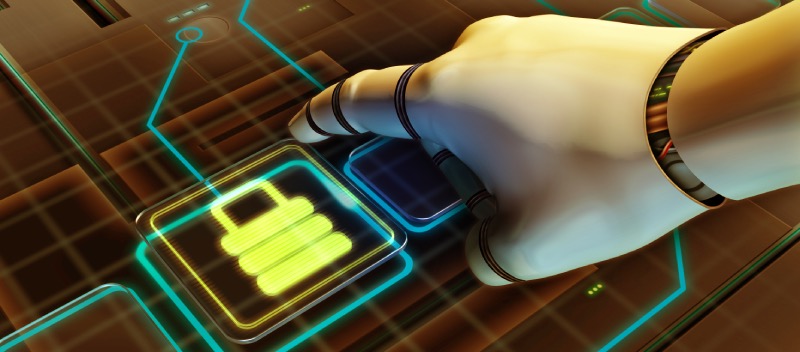
Storing, transmitting, and managing data is one of the primary support tasks that many organizations perform in today’s digital corporate landscape. Unfortunately, criminals are all too aware of this fact and are increasingly developing new strategies to break into, sabotage, steal, and destroy this precious information. For that reason, the security products designed to thwart them must also be constantly evolving. Next-generation endpoint security is the industry’s response to this burgeoning need. As an enterprise that deals in cloud-based data in its numerous forms, your company cannot afford to pass these innovations by. What is Traditional Endpoint Security? When old-school programs such as anti-virus packages set about safeguarding your networks from intruders, they rely heavily on known threat intelligence. Using the knowledge of their experts, they blacklist certain types of malware that they have identified as dangerous to prevent them from running on your systems. As they become aware of new types of attacks, program manufacturers upgrade their security software, as such, it is critical for IT managers to perform regular updates and maintenance of their networks. The flaw in this design is that millions of new methods of attack are launched every week, making it virtually impossible for this style of endpoint security to remain effective. Given this explosion of threats, security professionals had to come up with a better way to help their clients in shielding their valuable data from attack. No longer could they wait for a virus to be detected and its signature specified. New, next-gen solutions needed to address endpoint peripherals, the equipment that does not directly connect into a company’s network or shielded by its firewalls. Next-Generations Threats In order to understand next-gen endpoint protection, it is important to get a grasp of the diabolically innovative ways that criminals are exploiting users and attacking systems for their own profits. Although there are several common styles of attack, the two that are most frequently seen are the following: Phishing In this strategy, attackers embed malware inside sophisticated emails. Hapless users can easily be confused by the sleek credibility of these messages, which often appear to come from friends or trusted vendors or partners. However, the nasty surprises contained in the attachments these messages bear can wreak havoc on a company’s entire network, causing theft or destruction of data and endangering intellectual property. Ransomware This intrusion is particularly dangerous and disruptive. Frequently through the use of phishing schemes, attackers enter a network, encrypt its contents, and demand to be given payment before restoring it to regular use by its rightful owners. The growing acceptance of Bitcoin and other forms of artificial cryptocurrency have made these schemes even more difficult to trace and eradicate. Types Of Next-Generation Endpoint Security Although detecting threats has always been a challenge, analysis of the current cyber landscape is exponentially more difficult because criminals are targeting endpoint applications. Next-gen endpoint protection solutions must, therefore, have a laser focus on this particularly vulnerable aspect of cybersecurity requirements. Experts in this area gain the intelligence they need by employing a number of effective strategies: Behavioral techniques Security packages analyze the applications a company employs as well as how the end-user utilizes them. By so doing, they can gain insight into how criminals might work to exploit these elements. Traffic detection This next-gen security tactic is designed to recognize and block communications between the co-opted endpoint application and the unknown hacker before it can do any damage to your data or support center. Exploit mitigation Using this technology, modern security professionals can identify and block the technology that attackers use to gain access to the system. Machine learning In spite of its science-fiction connotations, this concept simply refers to the phenomenon of a security strategy benefiting from information that has been obtained via another one. Facts about the specific nature of viruses that are then incorporated into a second security suite is an example of this type of sharing. Deep learning This complex process of information exchange involves using an existing fund of knowledge about the numerous characteristics of data and malware to independently make determinations about security threats. The effectiveness of deep learning is, however, only as good as the information that is inputted into the algorithm. Components of a Next-Generation Endpoint Security Platform Although “next-gen” seems to be the buzzword of the decade, not all current offerings truly fall into that category. For an IT cyber-protection suite to be considered next-gen, it should contain the following indispensable elements: Good IT housekeeping If an IT team fails to update firmware and software and does not remain vigilant over users and their authentication and email behaviors, the effectiveness of any other protective measures will be seriously compromised. Therefore, keeping your IT house in order via human and automated technology tools is a must. Employ next-generation anti-virus solutions In addition to looking for known signatures, this software should also contain behavioral analytics capabilities that enable you to detect a prospective attack and stop it in its tracks. Endpoint detection and response When attack prevention is not enough, your company needs to be well-positioned to mitigate the effects of a breach. This involves thorough activity logging, data analysis, and intelligent discovery to lessen the time between when a breach was discovered and when its cascading consequences were halted. Threat intelligence. When your staff is armed with an ongoing stream of highly useful information about your systems, end-user behavior, and zero-day breaches that are coming on the scene, they can create and distribute spot-on reports in a timely fashion that serve to notify stakeholders of potential incidents before they happen and stimulate planning discussions that can ultimately cushion the organization from damage. Cloud-based ecosystem. Thanks to the infinite resources of this remote storage mechanism, your staff can collect massive amounts of systems-related data, store it indefinitely and search through it with speed and efficiency when a breach or other security incident arises. Malicious attacks are ceaselessly morphing, becoming more sophisticated and difficult to intercept with each passing
SOC for Cybersecurity
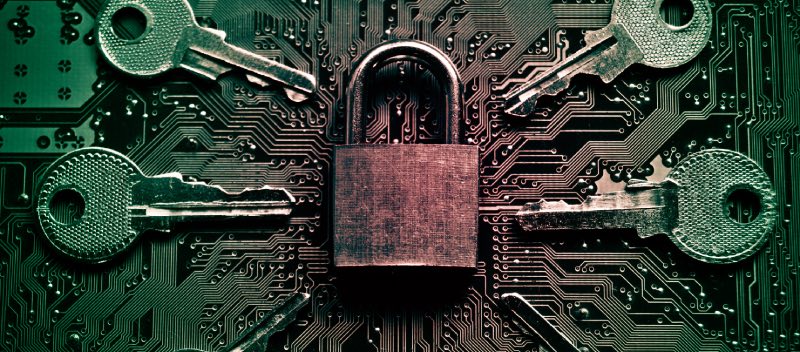
Managing customer data and exchanging digital information on a global level provides your organization with both unparalleled flexibility and versatility. However, opening up your resources and assets to the outside world also makes your cyber environment vulnerable to internal and external threats and outright attacks. For that reason, it is incumbent upon your IT management team to take concrete steps to safeguard your hardware, software, applications, networks, and overall security posture and practices. Conducting regular SOC cybersecurity assessments is one of the best ways to accomplish this goal. In order to do so, however, you must first understand the nature of these frameworks, the differences among the various models, and the roles they can play in furnishing information to your desired audience. What is SOC for Cybersecurity? Recognizing that data-driven businesses needed a tangible, industry-approved means of demonstrating their ability to manage and mitigate security risks and react to and recover from attack events, the American Institute of Certified Public Accountants (AICPA) came up with a framework of system and organization controls (SOC) that allows a third-party CPA auditor to examine the company’s cyber environment. Once armed with the information this model and its associated report reveals, stakeholders including senior managers, boards of directors, investors, and potential partners will have a comprehensive understanding of the organization’s strengths and weaknesses in the realm of systems protection. Ongoing compliance with the requirements set forth in these examinations can provide assurance that an enterprise is taking all reasonable measures throughout its operations to protect the information, technology, and other virtual resources it controls against risks. Talk to our experts today! The Elements of SOC Cybersecurity The cybersecurity SOC report consists of three distinct elements: Management description. Prepared by your company’s internal IT security team, this portion of the report gives perspective from the standpoint of security insiders as to your organization’s cybersecurity risk management strategy. Attention should be paid to identifying the data and other resources involved and detailing policies and procedures that have been put in place to safeguard these assets. Management assertion. In this section, your team makes a statement as to whether the controls you have established and practice meet your cybersecurity objectives. It must also specify if your descriptions adhere to cybersecurity requirements. Auditor’s opinion. This portion of the SOC cybersecurity report is where the CPA or CPAs insert their opinion as to whether the security controls are effective and all descriptions are accurate. A cybersecurity SOC report is considered to be a general use document. As such, it does not contain specific information listing controls or the methods used to test them, nor does it delve into whether your company is in compliance with certain industry standards. However, it is a useful way to validate which of your security mechanisms assist your organization in protecting the privacy and processing integrity of the data you protect. Other Cybersecurity Reports VS. SOC for Cybersecurity Before the AICPA introduced SOC for Security, organizations had long been using its previously issued SOC 1 and SOC 2 reporting tools. SOC 1 particularly addresses the concerns of companies dealing with financial data, using the SSAE 18 standard as a framework. SOC 2 looks at the security, availability, processing integrity, privacy, and confidentiality of a business’s systems and security controls, categories known as the five trust criteria. The audience benefiting from this framework usually consists of parties who are already knowledgeable about your company’s systems. The SOC 2 report that is generated will contain managers’ descriptions and assertions and the auditor’s opinions as related to the AICPA’s trust services principles outlined above. On the other hand, the cybersecurity SOC report focuses on the organization’s efforts to identify and mitigate any risk or threat that could interfere with their data services and network safety objectives. The examination and its results can be viewed by anyone, and the data about your company’s cybersecurity risk management policies and programs can be extremely useful tools during the formulation of a long-term strategic plan or other decision-making processes. If you still are unsure whether you need a SOC 2 or a SOC cybersecurity report, think of them in this way: A SOC 2 report is ideal for businesses looking to see if their networks, applications, data, and procedures are effective in providing protection for the customer information they manage. On the other hand, SOC for cybersecurity offers assurance that your company’s risk management protocols and procedures will serve as a strong fortress in the event of a data breach or other security incident. Some companies choose to utilize both solutions because of the distinct information that each model provides. In this era of constantly evolving attacks and high stakes, any and all practices that your management team and data center professionals can adopt to reduce these risks will be extremely worthwhile and advantageous to your organization’s long-term information security posture.
Compliance vs Security

An organization must constantly be on guard against external network attacks, threats from its own staff and third-party vendors and even fatal flaws in their own technology that can place data and systems at risk. In order to address this constantly evolving necessity, every business regardless of its size must implement measures to ensure both security and compliance. While these terms are often used interchangeably, each plays its own vital role in protecting the infrastructure of an organization such as yours. Security Defined Let’s start with what is involved in the general issue of cybersecurity. Using both human and advanced technological input, devices and systems, cybersecurity’s purpose is multi-faceted. For one thing, it contains mechanisms to lock down an infrastructure and safeguard it against the destructive effects of attack, theft, mis-use, carelessness or equipment failure. To a great extent, this feat is accomplished through prevention with the use of advanced file integrity, vulnerability and configuration management tools. In addition, data, both in motion and at rest, is kept safe with security architectures that detect and help to mitigate attacks while monitoring ongoing logs. All of these components are put in place to reduce the chances of breaches and minimize their effects should the worst happen. In many cases, the information they provide also enables a business to plan even tighter prevention and recovery strategies that they can use in the future. Overall, you can think of security as the web of technology, processes and controls put in place to protect stored, transmitted, utilized and distributed data from threat. Compliance Defined In addition to the consequences that information can suffer when a data breach occurs, there are other risks that need to be taken into consideration, including financial, legal and physical. This is where the point-in-time snapshot of security compliance enters the picture. Because the stakes of lax cybersecurity are very high, relevant industries have implemented their own specific security compliance protocols and requirements. In order to be compliant, companies internal or external compliance teams must perform audits of all networks and other systems as well as specify staff roles and procedures, interview employees, draft thorough reports specifying strengths and vulnerabilities and communicate them to the affected personnel. If all aspects of the security infrastructure meet industry standards, its security compliance can be certified. Compliance vs Security As you can see, both security and compliance appear on the surface to have similar goals. However, they go about achieving them in different ways. In a sense, your compliance team is the watchdog while the security squad is the group who is being watched. Your security team’s responsibility is to put into place and implement controls that will help to ensure safety; the compliance team is charged with seeing that adequate security strategies have been put in place and are effective. Moreover, security compliance specialists must provide proof of this fact in the form of direct evidence to be provided to a third party. How Security and Compliance Can Work in Tandem Fortunately, there does not need to be a dichotomy between these two concepts. Instead of compliance vs security, it is far more productive to think in terms of how these vital functions can combine to form a safety net for all of an organization’s vital processes and operations. There are several ways to accomplish this critical synergy: Automate as many of your security procedures and reports as you can in order to make monitoring for and documenting compliance as seamless as possible. Consistently document all controls that your business security team follows that are required for compliance. Keep and securely store all evidence of the security team’s work so that it can be produced during a compliance audit. Keep a dynamic calendar of all security and compliance-related tasks that includes descriptions of who, where and when for each responsibility. Although the cyber threat landscape is constantly changing, IT security compliance measures are slow to evolve. Organizations that marry the two sides of the security coin can ultimately benefit from a more productive working relationship and better-protect an environment.
Qualitative vs. Quantitative Risk Assessments in Cybersecurity
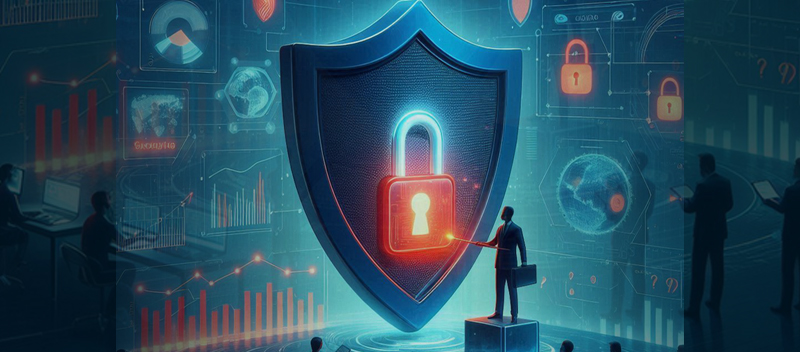
Assessing the risks within your cybersecurity system is one of the key priorities to address when conducting an ISO 27001 project or a related audit. It can be accomplished using quantitative risk analysis, qualitative risk analysis, or a combination of the two. Before you and your management team decide on the strategy you will use and start the process, learn about the benefits and differences between qualitative and quantitative risk analysis concepts. Qualitative Risk Analysis Defined As the name suggests, a qualitative risk assessment is more subjective. It depends upon the perspectives of interested parties regarding the possibility of risks arising in the business. It seeks to measure their impact on the enterprise’s reputation, financial outlook, and other aspects. In order to measure these elements, assessors give perceived risks numerical values that are easy to work with regardless of IT knowledge level. The qualitative risk analysis evaluation method can and should be performed on all risks because it provides easily obtainable, valuable information. On the downside, qualitative risk analysis can easily fall victim to the biases of the people providing their opinions. As a result, the scope of usefulness of qualitative risk analysis is usually limited to internal processes. Quantitative Risk Analysis Defined Quantitative information security risk assessments use factual data that can be measured mathematically or via other computational techniques. When the probability or impact of risk is measured, the quantitative risk analysis procedures can be easily replicated by anyone, even those outside the company. The results are often stated in monetary terms and show how much money the organization may lose as a result of the identified risks. This is where terms such as Single Loss Expectancy (SLE), Annual Rate of Occurrence (ARO) and Annual Loss Expectancy (ALE) values can be assigned. Due to the measurability and replicability of its data, a quantitative risk analysis is one of the most reliable and effective tools to perform because it provides precise information that company leaders can use to determine both the impact of risks and the amount of resources they should plan to invest in their remediation solutions. The main fault of quantitative analysis lies in data flaws. In many cases, there is insufficiently detailed information on hand to be utilized to develop a successful quantitative risk management strategy. Without valid data, these types of projects may yield unusable results or fail altogether. The Best of Both Worlds Fortunately, you do not necessarily need to think in terms of qualitative vs quantitative risk analysis; it is, in fact, possible to combine the processes and thereby take advantage of the benefits of both. In general, it is most helpful to begin with the qualitative risk analysis approach. One of the easiest methods to find issues is to talk to employees; this may help you learn a lot about possible hazards. The qualitative risk management methodology gives you a way to gain an understanding of the potential problem areas involved so that they can be prioritized according to importance. The next thing you can do is put into practice a thorough quantitative risk analysis methodology that uses information that is more quantifiable and less biased to examine the most worrying risks. These results can then be used internally or provided to a certification auditor conducting further compliance assessments. Strengthening Your Information Security with TrustNet Regular implementation of an ISO 27001 risk assessment should be a critical component of protecting your company’s information security system against vulnerabilities and risks. Careful planning and judicious use of numerous assessment techniques based on both qualitative and quantitative information are some of the best ways to know how to utilize your resources. In a business climate where financial assets are at a premium and automated monitoring strategies are inadequate, conducting a robust risk assessment just might be one of the smartest steps you ever take. TrustNet’s proficiency and experience with conducting comprehensive ISO 27001 risk assessments help you navigate the complexities of information security, providing you with the confidence that your assets are safe and secure.
Cyber Threat Hunting
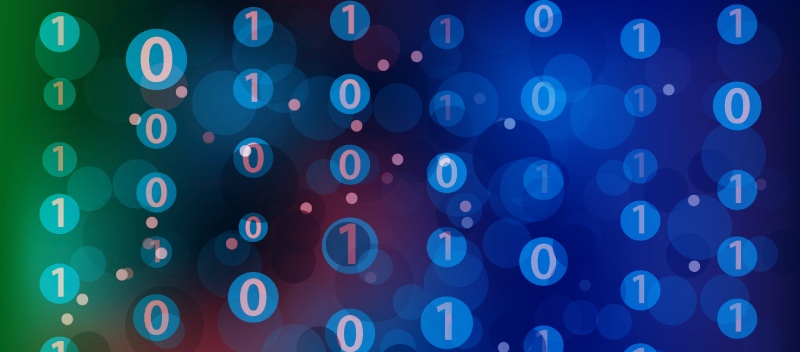
Your company’s network is a complex environment managed by many moving parts. That makes detecting intruders a constant challenge. The truth is that cyber attackers and malware can lurk undetected in your system for days, weeks or months stealing credentials, doing damage or monitoring your activity. It probably goes without saying, but your network and sensitive data become more threatened with every passing moment that this criminal invasion is allowed to continue. While thorough security training, protocols and practices, anti-virus software and automated scanning programs must be vital parts of your strategy, there are situations when they are not sufficient. That is when you need to institute cyber threat hunting. What Is Threat Hunting? After a data breach occurs, companies typically implement a forensic investigation, performing an analysis of how vulnerabilities in the system opened the door to infiltration. By contrast, cyber hunting involves proactively looking for malicious code or other signs that your system has been usurped by an unauthorized entity. Ideally, this is a preemptive procedure that happens before any real damage is done. It is designed to sniff out what are known as advanced persistent threats (APTs) that automated and basic security tools are not equipped to catch. Preparing for Cyber Threat Hunting Think of cyber threat hunting as an additional layer that enhances your basic system protection solution. In order for it to be effective, the foundation must first be as airtight as possible. Your security setup should include a state-of-the-art firewall, anti-virus software, network capture, endpoint management and security information and event management (SIEM). Furthermore, you will need access to threat intelligence resources that will enable you to research IP addresses, new malware types and indicators of compromise (IoCs). Next, you need to learn exactly what your goals are as an enterprise and what threats you want to find. Setting these prioritized intelligence requirements (PRIs) enables you to determine what is most important from an organizational standpoint so that you can make educated guesses about what specific threats might arise and how you might preemptively detect them. What Does a Threat Hunter Do? Finding, isolating and eliminating a threat or threats that have eluded other security solutions has recently become a lucrative job in the industry. The cyber threat hunter is quickly becoming an integral member of corporate network security teams. A hunter’s job responsibilities include keeping an ear to the ground, using intelligence about known malware and other threats to hunt them down and neutralize them. In order to correct current vulnerabilities and predict future issues, they also analyze all aspects of the breach and its perpetrators, including whether the attack came from inside or outside, who the threat actors are and what infiltration methods they used. Cyber Threat Hunter Techniques and Tools A threat hunter combines the scientific method with the skills and approach of a detective. In order to find lurking threats, the hunter first makes a hypothesis on potential methods of entry using intelligence about the company, its system vulnerabilities and the industry within which it operates. Relevant skills include the following: Knowledge of the IT environment; The ability to make hypotheses about possible threats and their sources as well as their potential impact on the organization; The ability to analyze and interpret statistical data; The forensic skills to investigate the root causes and time line of attack incidents. The cyber hunt team or person then uses an arsenal of software and other security monitoring tools such as firewalls, anti-virus, data loss prevention and intrusion detection. In addition, the following strategies are generally employed: Security Information and Event Management (SIEM) solutions compile data and event logs in real time to track and analyze security incidents. Statistical and intelligence analysis software. Statistical tools search for mathematical irregularities in the data that might signal a breach while intelligence analytics tools seek out hidden or complex relationships in the environment. Logs. Without data, a threat hunter cannot function. Logs are major sources of the vital information that is necessary for the security team to do their preemptive work. These include proxy/firewall, event and anti-virus logs. Proactive threat analysis and detection is where today’s cybersecurity hunters excel. The process of continuously gaining knowledge about an environment, predicting gaps, warning signs and weaknesses and intercepting an attacker is complex and very company-specific. If your business has not already added cybersecurity hunting to your proactive security infrastructure, the time has come to seriously consider doing so.
Security Patch Management Best Practices

One indisputable fact about today’s software and firmware is that change is inevitable. When vulnerabilities or bugs are discovered or an upgrade is necessary because of evolving technology, a patch is released. Patch management security involves ensuring that all equipment, including applications, software, browsers, network systems and whatever is being used remotely by workers off-site receives updates and upgrades as soon as they are released. To say that security patch management is complex is an understatement. However, that underscores the importance of understanding and implementing it properly to ensure that vulnerabilities in your network are minimized. The Security Patch Management Process Defined To put it simply, patch management involves planning, testing and installing patches on various components of your network in a timely fashion. Staff who are put in charge of this role are also responsible for prioritizing what needs to be updated or upgraded first. The admins who are in charge, therefore, must remain abreast of new patches as they become available for specific applications and programs, prioritize patching tasks and have the knowledge to conduct testing and certification that all patches have been correctly installed. Perhaps one of the most important steps is the final one: making a log of all procedures so that they can be replicated or submitted to regulatory officials during the compliance process. Challenges During Security Patch Management Patch management is rarely a smooth process. In fact, any number of roadblocks can arise. For one thing, most networks are home to a wide variety of devices, including laptops, phones and printers as well as a host of different operating systems and configurations. Your organization’s IT specialist faces quite a task when juggling all of those components and requirements. Adding automated patch management software to your cybersecurity infrastructure can reduce the chance of human error or oversight that might otherwise lead to vulnerabilities due to an uninstalled patch. This software can scan for patches and install them according to your company’s customized parameters. Time is another variable that admins must take into consideration. While it is ideal to install and apply a patch as soon as possible after its release, other priorities might take precedence. Furthermore, patch installation can require that parts of your system be taken offline, which is often not practical during a busy workday. Balancing out the timing of all of the testing and installation tasks to be found in a large organization can be daunting, to say the least. Because patch testing can be time-consuming and costly, some businesses elect to forego it altogether, preferring instead to move directly to the implementation process. Unfortunately, this lapse can lead to instability in the environment and may even leave loopholes that criminals can exploit. Advantages of Implementing Patch Management Best Practices Although patch management can present challenges to your cybersecurity team, these obstacles are well worth overcoming because of the benefits to be found. For one thing, regularly installing patches markedly bolsters your company’s security posture and helps to protect your invaluable data and programs. In addition to fixing weaknesses, some patches are designed to enhance your firmware or software. Therefore, installing them can increase your company’s productivity, elevate staff morale and lead to successful outcomes. Developing a Patch Management Plan In order for effective patch management to take place, you will need to develop a plan. The following are some general steps for a patch management procedure that you can institute: Conduct a full network assessment and inventory. That means accounting for all devices and their operating systems as well as the applications each contains and who has user privileges. Remember that this list also needs to include people who work remotely using company assets and that all elements must be operational and ready for security updates. Set patch guidelines, including understanding when patches are released, the priority and time frame of what will be updated and when and when the routine schedule should be superseded by emergency updates. Identify which devices have lapsed patches and which need to be updated first. Some may not be ready for the new patch and will need to be upgraded or replaced. In other instances, installing the patch might interfere with other software. The protocol should address all of these potential concerns. Test the patch in a real or virtual lab environment, making sure to perform a backup in case of unintended consequences. Once your IT specialist is certain that the modification will not adversely affect other systems or software, it can be implemented in the real environment. Deploy the patch on each device, informing any affected users if the update is to occur during work hours. Monitor all updates, keeping a record of all patches and versions as well as any other relevant statistics that could affect future patches. Patch Management Best Practices There are several steps you can take to implement your windows server patching best practices protocols. Consider writing a patch management process document to help you keep track of the various strategies: Inventory your system. Start with your hardware architecture; then specify all software and their versions, firewalls, anti-virus software and other security protections. Consolidate software and do your best to integrate programs. Doing so will minimize the number of applications that you need to monitor and regularly patch. Automate your patch management as much as possible. Taking this step will help your efficiency by reducing the chances that you will miss an update or forget to install one on a particular machine. Assign each computer and application a risk level and order for patch installation. After backing up data, test patches in the environments in which they will be installed. If all goes well, install them throughout the system. Protect systems that are unpatched for any reason. Restrict user permissions and, if possible, close the server to the internet until upgrades can be put in place. This patch management process template offers a general protocol framework that can help you as you develop your upgrading procedures. Since every enterprise
Network Security Issues: Common Network Threats
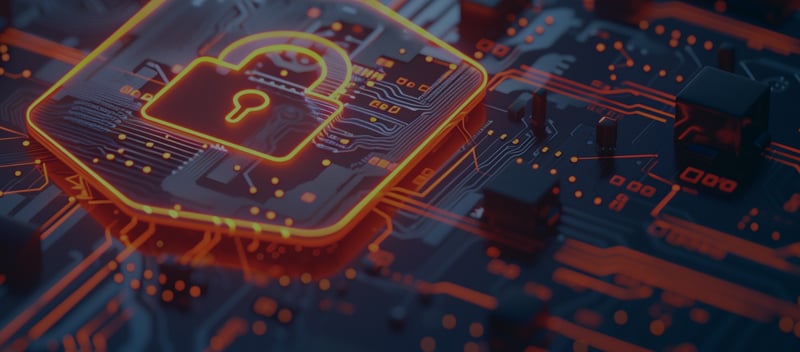
Today’s business landscape has expanded from local to global. Although this has resulted in numerous benefits, there is also an increase in your risk level, particularly when it comes to threats to your cybersecurity. That is why it is essential to understand the nature of the attacks that you could experience so that your management and information technology staff can begin working to prevent, detect, and neutralize these network security problems should they occur. Distributed Denial of Service Attacks The number of DDoS attacks that businesses experience is growing each year. That is probably because these intrusions can do so much damage. They work like this: Hackers flood your networks with such a high traffic volume that your systems are drastically slowed or even paralyzed. Often, bad actors target Internet-of-Things (IoT) products with poor security protections to gain access to internal systems. Once they have infiltrated your firewall perimeters, they can implant malware, steal data, commit identity fraud, or engage in numerous other types of criminal activity. Effective firewalls, monitoring, and early detection are the best defenses against these attacks. Mitigate your risks by implementing a preemptive DDoS plan to track your LAN and WAN network traffic flow and bandwidth usage so that you can react immediately if an anomaly appears. Ransomware You may have heard of ransomware, the nightmare attack that has brought many corporate operations to their knees by holding the business’s networks hostage until large amounts of cash are sent to the criminals. This significant information security issue is actually even more complex; it can also result in corruption or loss of data. It exploits unpatched computer workstations and automated software updates to barge into your systems. The best way to protect your system from these malicious and destructive attacks is to employ common-sense cybersecurity measures, such as ensuring that all programs and patches are updated regularly. Furthermore, you should invest in vulnerability assessment tools and auditing to obtain information about weaknesses or flaws in your defenses. Cloud-based Malware Relying on third-party vendors to manage and store your data offsite is more secure than keeping it on your premises. However, hackers have figured out ways to take advantage of this behavior by exploiting the vulnerabilities in these systems. While your internal solutions may be ironclad, these weaknesses in your third-party security architecture can put your data and mobile and wireless devices at serious risk. Implementing advanced threat intelligence monitoring and other analytics can give you a heads-up to guard against these network security issues. For more on our Managed Security Services, Click Here Networking Threats from the Inside While it is crucial to safeguard your perimeters with a robust public firewall, you need to be equally diligent in protecting your assets against networking security issues from users who already have authorized access and system rights and privileges. Employees do this type of damage for several reasons: to deliberately harm your business by stealing or compromising data, to commit industrial espionage to benefit a competitor, or out of sheer carelessness or incompetence. The best network security solution, in this case, is to implement a multi-layer defense that consists of prioritizing assets according to criticality, developing and implementing a clear insider threat policy that includes ongoing training and upgrades as systems evolve, strictly documenting and enforcing these policies, and monitoring employee network activity. Encrypted Network and Web Traffic Encryption allows companies to protect the confidentiality of the information they store and send. Still, it also gives hackers a way to hide their malware so that it is harder to detect and neutralize. With these network security threats, one of the best remedies is using automated machine learning and artificial intelligence solutions that can analyze patterns in encrypted content and alert you should a potential risk be detected. Social Engineering Attacks Email is a vital communication tool that enables employees to share mission-critical information with coworkers and external collaborators. However, it is also one of the easiest ways for hackers to breach your security architecture. This network security risk can take place in numerous ways, many of which require the unwitting cooperation of end users. In some instances, malware is hidden in commonly used Microsoft Word, Excel, and PowerPoint file extensions. At other times, hackers launch phishing attacks, sending email messages appearing to come from legitimate sources that encourage the person to open malware-laden attachments or to provide sensitive company or personal identity data. Installing robust spam filters and upgrading systems are helpful. Still, you must also implement and regularly conduct staff training to ensure your employees know the red flags that often signal these common types of attacks. Social Engineering Attacks Discussing cybersecurity problems and solutions would not be complete without looking at the inner workings of your network’s safety system. A breach will occur sooner or later, and your enterprise needs to be ready for it by already having a robust internal safety net in place. The problem is that many companies have an open network structure that gives hackers universal access to every account, data cache, and wireless device throughout the ecosystem once they gain unauthorized entry. Any conversation about fixing network threats should include reviewing the pros and cons of network segmentation for your company. When this infrastructure is used, your network is divided into several autonomous subnets whose traffic you can control with individual rules. Once protected in this way, your risks of severe breach consequences are reduced because this structure helps to slow hackers down, giving you time to implement containment and neutralization measures. Stay Ahead in the Fight Against Network Security Threats There is a constant push-and-pull relationship between network security threats and solutions. As soon as one type of vulnerability is addressed, bad actors target another. This is why it’s crucial to continuously monitor your network ecosystem for the first signs of trouble, allowing you to act immediately. While your defenses may never be 100 percent effective against all threats, they can protect you against most modern network security issues and



